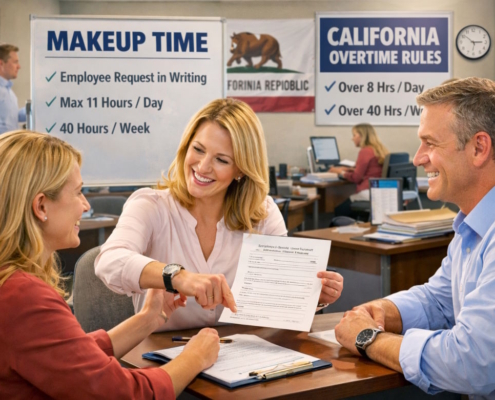Why is an EEOC complaint bad for an employer?
Good intentions alone won’t guarantee that an organization is truly an equal opportunity employer. A complaint under EEOC regulations can still arise even after you believe you have taken all necessary steps. It may be easy to handle an internal complaint within your company, but charges filed with an official agency can have severe repercussions if not handled properly.
How do EEO laws work?
In essence, these encompass all matters that are overseen by the Equal Employment Opportunity Commission (EEOC), an agency responsible for enforcing an array of federal EEO laws. The overarching goal of the laws is to make it illegal to treat people differently on the basis of legally protected traits, such as age, gender, or race, when hiring new staff or evaluating job applicants. Title VII of the Civil Rights Act of 1964, for instance, applies to companies with fifteen or more employees, though each of these statutes has its own specific limitations.
Employers still face issues in other areas, despite the fact that tools have made it easier to stay compliant with EEO legal requirements during recruitment. The number of formal complaints has been relatively stable over the past 20 years, hovering around 90,000 annually, despite heightened awareness of EEO guidelines. Some of these issues can lead to expensive lawsuits.
You are required to submit a position statement and any relevant data in response to such complaints. The procedure is as follows: upon receiving notice of a discrimination charge, you must respond. It is essential that you provide the EEOC with any and all assistance they may request. There are two goals for the employer here: first, to make sure the charge doesn’t turn into a lawsuit, and second, to figure out what to do if it does. Time and money are on the line if you mess up at any point in this process.
When it comes to responding to an EEOC complaint, there are six common mistakes that employers make that they should be aware of.
- You choose to ignore the complaint
On occasion, businesses choose to disregard EEOC complaints. When they have fewer than 15 employees, they might believe that the Equal Employment Opportunity laws do not apply to them. This isn’t always correct. Section 1981 of the Civil Rights Act takes precedence over Title VII in instances of racial discrimination, which comprised over a third of all complaints in 2015. Every business, no matter how big or little, is subject to this law.
Furthermore, employees may be better protected by state or county-level Fair Employment Practices Agencies (FEPAs) than by the EEOC. The right decision is to handle a complaint. There is plenty of time for you to consult an attorney, organize an investigation, and take remedial measures. Instead of taking your case to court, you might be able to resolve it through mediation or some other informal means.
- You don’t take initiative
The best defense you have when dealing with the law is thorough documentation. Make sure you have an investigation strategy in place ahead of time so you can jump right in when the need arises. Evidence can come in many forms; some examples include data, statements from coworkers, and reviews of relevant documents. Some of these details (like employee performance, for example) build up over time, so you’ll need to prepare ahead of time to record them correctly.
This improves the organization’s chances of making a strong defense. Having a well-communicated EEO statement, a policy against workplace harassment and equal opportunity, and a system in place to handle internal complaints is, of course, essential.
- You’re not always consistent
One clear benefit of conducting an investigation promptly is that it enables you to maintain consistency. If you don’t take your position statement seriously, you might forget to include important details or explanations for your actions. After the initial shock wears off, you might wish to supplement your court statement with additional details.
However, this discrepancy will probably be seen negatively by the courts. What you have done is give them reason to doubt your arguments and ultimately reject you. Therefore, you need to make sure the position statement is written responsibly and that you have a comprehensive plan for investigating.
- You don’t grow or get better
It is important to view a lawsuit, regardless of the outcome, as a challenging but ultimately educational experience. A conscientious employer knows exactly what to do in the event that a discrimination judgment goes against them. Take swift action to resolve the internal issue, identify its root causes, and prevent a recurrence. If the case is successful, you will have another opportunity to put safeguards in place that will ensure regular EEOC compliance. It is important to give diversity and inclusion training and programs more consideration because discrimination can sometimes be subtle or unintentional.
- You take revenge
There is a temptation for employers to have a bias towards employees who have complained of discrimination, either internally or to the EEOC. When a lawsuit or complaint turns out to be baseless, the desire for revenge can be overwhelming. Some employers stop believing their workers who make complaints and end up treating them badly.
This might land you in serious trouble. Nearly half of all charges filed in 2015 were retaliation lawsuits, which are extremely serious. You can still face retaliation charges even if the court rules in your favor on the initial discrimination charge. Establish and adhere to a zero-tolerance policy regarding retaliation.
What happens if an EEOC complaint goes unanswered?
Neglecting an EEOC complaint may result in severe repercussions, such as possible legal action. Some employers may be subject to additional rules and regulations even if they believe EEO laws do not apply to them. Always seek legal counsel and address complaints promptly.
When confronted with a discrimination lawsuit, what steps can an employer take?
It is important to view a lawsuit as a chance to learn, regardless of the outcome. Companies need to investigate the root of the problem, fix it internally, and make sure it doesn’t happen again. Employers should still take precautions that will result in consistent EEOC compliance, regardless of the outcome of the lawsuit.































